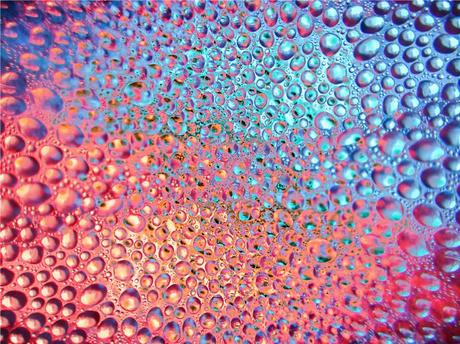Dewetting — the opposite of spreading

UK researchers have made the first ever direct observation of the elusive dewetting process, which takes place when a liquid film retracts to form a bead-shaped drop. Their achievement could lead to breakthroughs involving the use of liquids, such as better coatings and more effective self-cleaning surfaces.
Dewetting is the opposite of spreading, in which a bead-like drop of liquid falls onto a surface and slowly spreads to form a thin film. Dewetting, on the other hand, occurs when a liquid film retracts from a solid to form a bead-shaped drop, which can be observed when a wet window is left to dry up.
Despite its apparent simplicity, the direct observation of the full dewetting of a droplet into a single drop had remained elusive and difficult to achieve. Scientists from Northumbria University and Nottingham Trent University recently came up with an ingenious solution to this problem, the results of which have been published in the journal Science Advances.
Using a novel method known as dielectrowetting, the research team exploited the electric properties of liquids to force a liquid to coat a solid surface using an applied voltage. By embedding very thin patterned electrodes in the solid and carefully arranging them into a circular pattern, they achieved the formation of a thin circular liquid film. By switching off the voltage, they revealed, for the first time, the full dewetting process of the liquid film back to a bead-like drop shape.

“At first sight, one might have expected that dewetting is just the time-reversal of spreading,” said Professor Carl Brown from Nottingham Trent. “Surprisingly, we found that dewetting is not spreading in reverse. Instead of a smooth sequence of drop-like shapes, the dewetting film forms a rim at its own edge, which retracts at constant speed for most of the dewetting process.”
To understand this behaviour, the team used a combination of theory and numerical simulations to rationalise the experiments. Dr Rodrigo Ledesma-Aguilar, from Northumbria, said: “Both the simulations and the theory support that the liquid tends to adopt the closest local equilibrium shape it can during dewetting. This explains the smooth rim shape which survives for most of the process.”
So what can the researchers achieve with their newfound knowledge? Dr Michael Newton, from Nottingham Trent University, said, “Our method can be used to learn more about the underlying physics behind other dewetting phenomena such as condensation, evaporation and droplet rebound. These processes are critical for applications such as fog-collection, coating and lubrication. The technique developed can also be used for characterising liquid properties when only small volumes are available.”
Professor Glen McHale, Pro-Vice Chancellor (Engineering and Environment) at Northumbria University, added, “Our experimental set-up opens up the possibility of preparing liquid shapes in a very controlled manner, which then dewet. This can lead to new methods for liquid manipulation in technologies such as coating and self-cleaning surfaces.”
Best practices for safe centrifugation in the laboratory
The majority of all centrifuge accidents are understood to result from user error. These tips...
Nature-inspired filtration system recovers critical resources
A filtration system that can recover untapped critical resources such as copper and lithium from...
Optimising food and beverage testing with laboratory equipment
In the food and beverage industry, laboratories must balance precision, speed and compliance to...





